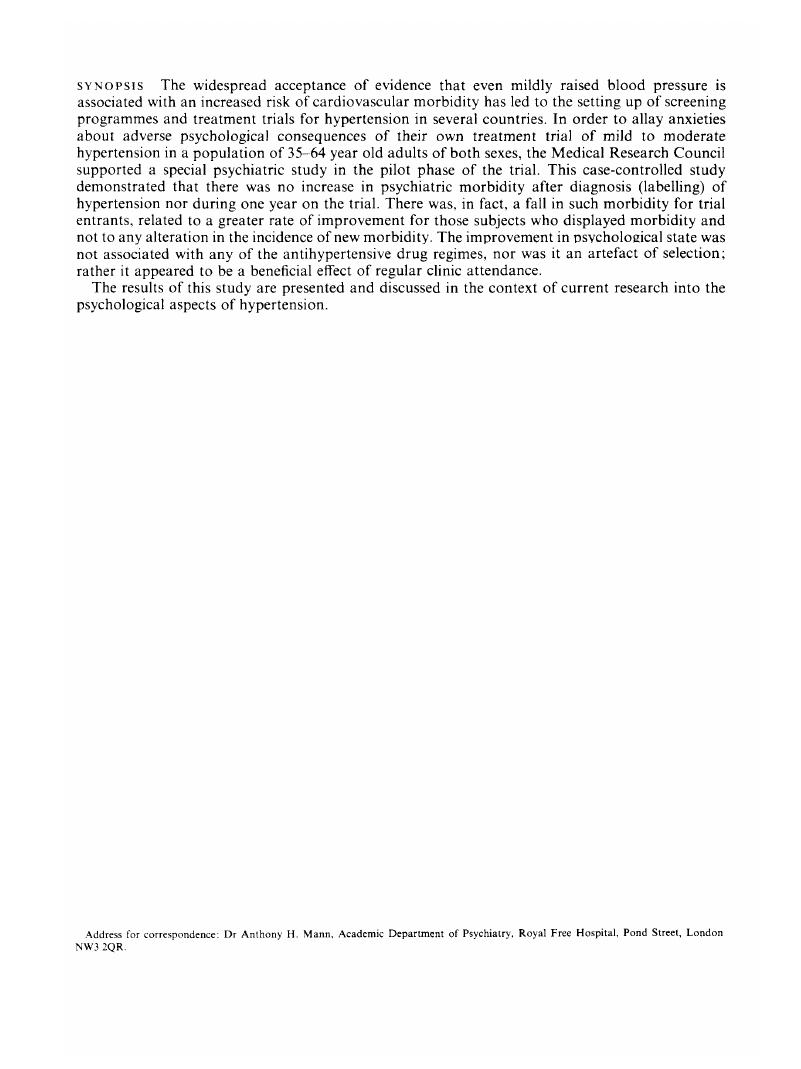Crossref Citations
This article has been cited by the following publications. This list is generated based on data provided by Crossref.
Taylor, Stanley H
1987.
Drug therapy and quality of life in angina pectoris.
American Heart Journal,
Vol. 114,
Issue. 1,
p.
234.
Nicol, A. R.
Stretch, D. D.
Fundudis, T.
Smith, I.
and
Davison, I.
1987.
THE NATURE OF MOTHER AND TODDLER PROBLEMS—I. DEVELOPMENT OF A MULTIPLE CRITERION SCREEN.
Journal of Child Psychology and Psychiatry,
Vol. 28,
Issue. 5,
p.
739.
Bulpitt, Christopher J.
and
Fletcher, Astrid E.
1988.
Measurement of the quality of life in congestive heart failure—Influence of drug therapy.
Cardiovascular Drugs and Therapy,
Vol. 2,
Issue. S1,
p.
419.
Steiner, A.
Edmonds, D.
Greminger, P.
and
Vetter, W.
1989.
International Yearbook of Nephrology 1989.
p.
115.
Wessely, S
Nickson, J
and
Cox, B
1990.
Symptoms of low blood pressure: a population study..
BMJ,
Vol. 301,
Issue. 6748,
p.
362.
Moum, Torbjørn
Næss, Siri
Sørensen, Tom
Tambs, Kristian
and
Holmen, Jostein
1990.
Hypertension labelling, life events and psychological well-being.
Psychological Medicine,
Vol. 20,
Issue. 3,
p.
635.
Wiklund, Ingela
and
Karlberg, Johan
1991.
Evaluation of quality of life in clinical trials.
Controlled Clinical Trials,
Vol. 12,
Issue. 4,
p.
S204.
Ferrara, L A
Di Marino, L
Russo, O
Marotta, T
and
Mancini, M
1993.
Doxazosin and captopril in mildly hypercholesterolemic hypertensive patients. The Doxazosin-Captopril in Hypercholesterolemic Hypertensives Study..
Hypertension,
Vol. 21,
Issue. 1,
p.
97.
Rose, Gisela
and
Segesten, Kerstin
1995.
Someone Who Cares.
Scandinavian Journal of Caring Sciences,
Vol. 9,
Issue. 2,
p.
105.
Rose, Gisela
and
Bengtsson, Calle
1996.
Effects of a health examination programme on quality of life and subjective well-being.
Scandinavian Journal of Social Medicine,
Vol. 24,
Issue. 2,
p.
124.
Condren, R. M.
and
Thakore, J. H.
2001.
Cushing's Disease and Melancholia.
Stress,
Vol. 4,
Issue. 2,
p.
91.
Rasul, F.
Stansfeld, S. A.
Davey-Smith, G.
Hart, C. L.
and
Gillis, C.
2001.
Sociodemographic Factors, Smoking and Common Mental Disorder in the Renfrew and Paisley (MIDSPAN) Study.
Journal of Health Psychology,
Vol. 6,
Issue. 2,
p.
149.
løkkegaard, Thomas
Andersen, John s.
Jacobsen, Rikke k.
Badsberg, Jens H.
Jørgensen, Torben
and
Pisinger, Charlotta
2015.
Psychological consequences of screening for cardiovascular risk factors in an un-selected general population: Results from the Inter99 randomised intervention study.
Scandinavian Journal of Public Health,
Vol. 43,
Issue. 1,
p.
102.





